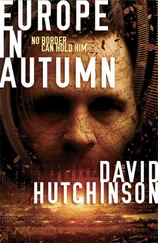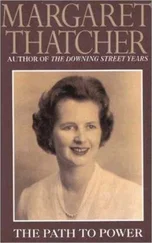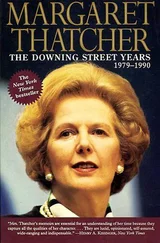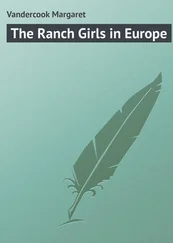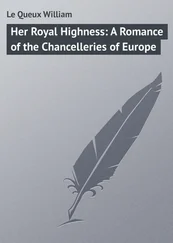No less a person than the EU Commissioner in charge of the Internal Market and Taxation, Frits Bolkestein, has admitted that Europe faces a ‘pensions time-bomb’. He has noted that the ratio of workers to pensioners will decline from four to one to less than two to one by 2040. And he observes that if unfunded pension liabilities were shown up in the national accounts of some member states this would represent a debt of over 200 per cent of GDP. 13Italy is the EU country which is facing the worst crisis. It has a fertility rate of just 1.2, the lowest in the world, and also the world’s most costly pensions system, amounting to over 15 per cent of GDP – 33 per cent of worker payrolls, expected to rise to 50 per cent by 2030. 14
Continental European countries have walked into a trap from which there appears no painless exit. Of course, they could not know just where demography would lead. But they have known well enough for some years that the promises implicitly made to pensioners could not be afforded. It was precisely because we realised the implications for Britain’s public finances that in 1980 we ended the connection between the retirement pension and incomes (it now rises in line with prices). And in 1986 we cut back state funding of the State Earnings-Related Pension Scheme (SERPS) and provided incentives to opt for private-sector Personal Pension Plans (PPPs). As a result, future state obligations have been curtailed to manageable levels. Britain also now has more money invested in pension funds than the rest of Europe put together. Although other EU countries have made repeated attempts to scale back their social liabilities, none has taken similar substantial steps. As a result, just three countries – the United States, Britain and Japan – possess three-quarters of the entire world’s funded pension assets. 15
Quite how the countries of mainland Europe are going to cope with their problems is unclear. But someone is going to be disappointed – either pensioners or workers. And it seems that the official figures actually understate the scale of that disappointment. This is because it is not enough to express the problem in terms of national finances: it can only be understood in terms of equity between the generations. There is nothing theoretical about this. If one generation is expected to carry an excessive burden on behalf of another it will seek by every means to avoid it. It will either demand that past promises are broken, or it will not work, or it will not pay its taxes, or the most talented people will leave. Socialist governments which have tried to tax ‘till the pips squeak’ have ample experience of that. It is the main reason why even left-wing governments today try to keep marginal tax rates down. In the present case, and employing the concept of ‘generational accounts’ – which ‘represent the sum of all future net taxes (taxes paid minus transfer payments received) that citizens born in any given year will pay over their lifetimes, given current policy’ – Niall Ferguson and Laurence J. Kotlikoff have made various projections of the changes required to achieve ‘generational balance’. The scale of what is implied is illustrated by the conclusion that, for example, nine EU countries would need to cut government spending by more than 20 per cent if they wanted to rely on this means to achieve balance. 16
THE COMMON AGRICULTURAL POLICY AND PROTECTION
Europe’s pensions problem is relatively recent. By contrast, its agriculture problem is of long standing. Although the European Common Market had its origins in a project to create a common policy towards coal and steel, it was the Common Agricultural Policy (CAP) which from the time of the Treaty of Rome was the central pillar of the structure. 17Political leaders and their policies come and go. Reform programmes rise and fall. But the CAP goes on for ever. No one seriously seeks to justify it. The days when we were told that without it Europe might be short of food have long since passed. Despite successive attempts at reform, not least those initiated by Britain, the CAP is wasteful, environmentally damaging and extremely costly. It still absorbs some £30 billion – about half of the EU’s total budget. 18But it continues because it constitutes the most important reason why the less industrially developed European countries put up with other European programmes that diminish their competitiveness, and it is the unspoken reason why so many new countries want to become members.
The CAP puts up the cost of food for EU consumers, thus increasing our costs and reducing our growth. It also depresses food prices worldwide, as subsidised European food exports deprive farmers in poorer countries of their livelihoods. This is precisely the wrong way round. Industrialised countries need low-cost workforces; agricultural countries need to provide their peasants with incomes. Both lose from the CAP.
The CAP is also a force for global protectionism. It has been estimated that the CAP is responsible for 85 per cent of the world’s agricultural subsidies. 19Not surprisingly, this prompts widespread resentment. Other countries, aware of this scandalous situation, are thus less willing to make compromises and resolve disputes.
The EU is not the only body which subsidises agriculture and it is not the only trade grouping which is inclined to protectionism. But on both counts it is certainly the most serious global offender. It has been estimated that the total annual cost of the CAP to the world economy is about $75 billion, of which two-thirds is borne by the Europeans in the form of higher prices, inefficient production and economic distortions. The rest falls on non-EU countries through lost agricultural export opportunities. 20
Another expert study has found that the EU economy is almost as protected as it was a decade ago. Thus Professor Patrick Messerlin calculates that the cost of this protection, across the board, is equivalent to about 7 per cent of the European Union countries’ GDP, some $600 billion. 21
The European tendency towards protection – demonstrated not just in the operation of the CAP but in numerous trade questions: films, bananas, and hormone-treated beef – is inherent in the European project itself. The reluctance to engage in open trade with the outside world only reflects a reluctance to accept the working of open markets at home. The EU and its predecessors were never, it should be remembered, interested primarily in free trade as such. They were and are a customs union – that is a group of countries which, while allowing free trade among themselves, charges a common set of tariffs to the rest of the world. The level of these tariffs has fallen sharply from an average of 12 per cent to 3 per cent over the last forty years as part of international trade negotiations. But the concept of global free trade is one to which the European countries have never been wedded, and never will be.
In theory, fundamental reforms of the CAP might, if they ever came about, remove one of the main reasons why the EU is such a force for protectionism. But the combination of high taxes, high levels of regulation and so high costs on the one hand, and the inflexibility resulting from a single currency and interest rate on the other, will in any case press Europe further down the protectionist path. Even within the framework set by the World Trade Organisation, there are many ways in which the EU could provide covert protection for its producers – such as through ‘anti-dumping’ measures. The EU’s trading partners must expect that it will do everything that it can to exploit such loopholes.
As the European superstate emerges on to the world scene, it will be keen to flex its muscles in economic as in other matters. It will seek to combat the ‘neo-liberalism’, i.e. the belief in free markets, which the French and German Finance Ministers so roundly denounced in Le Monde . It will try to substitute a more highly managed, i.e. more bureaucratic, model on international trade and finance. The Europeans will ultimately fail. But ‘ultimately’ can be a long time. Meanwhile, they spell trouble.
Читать дальше

